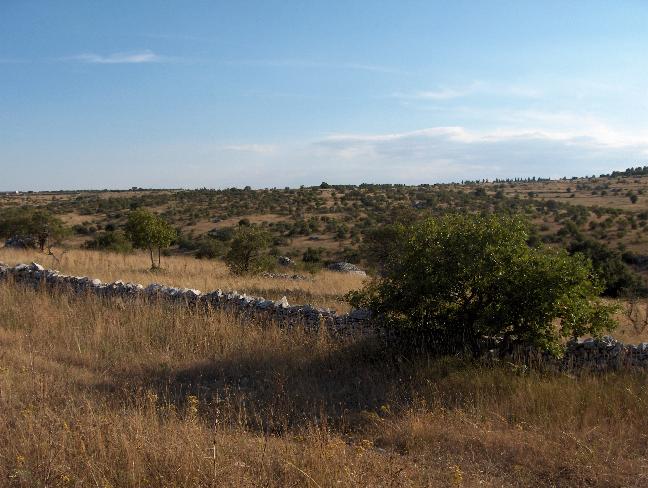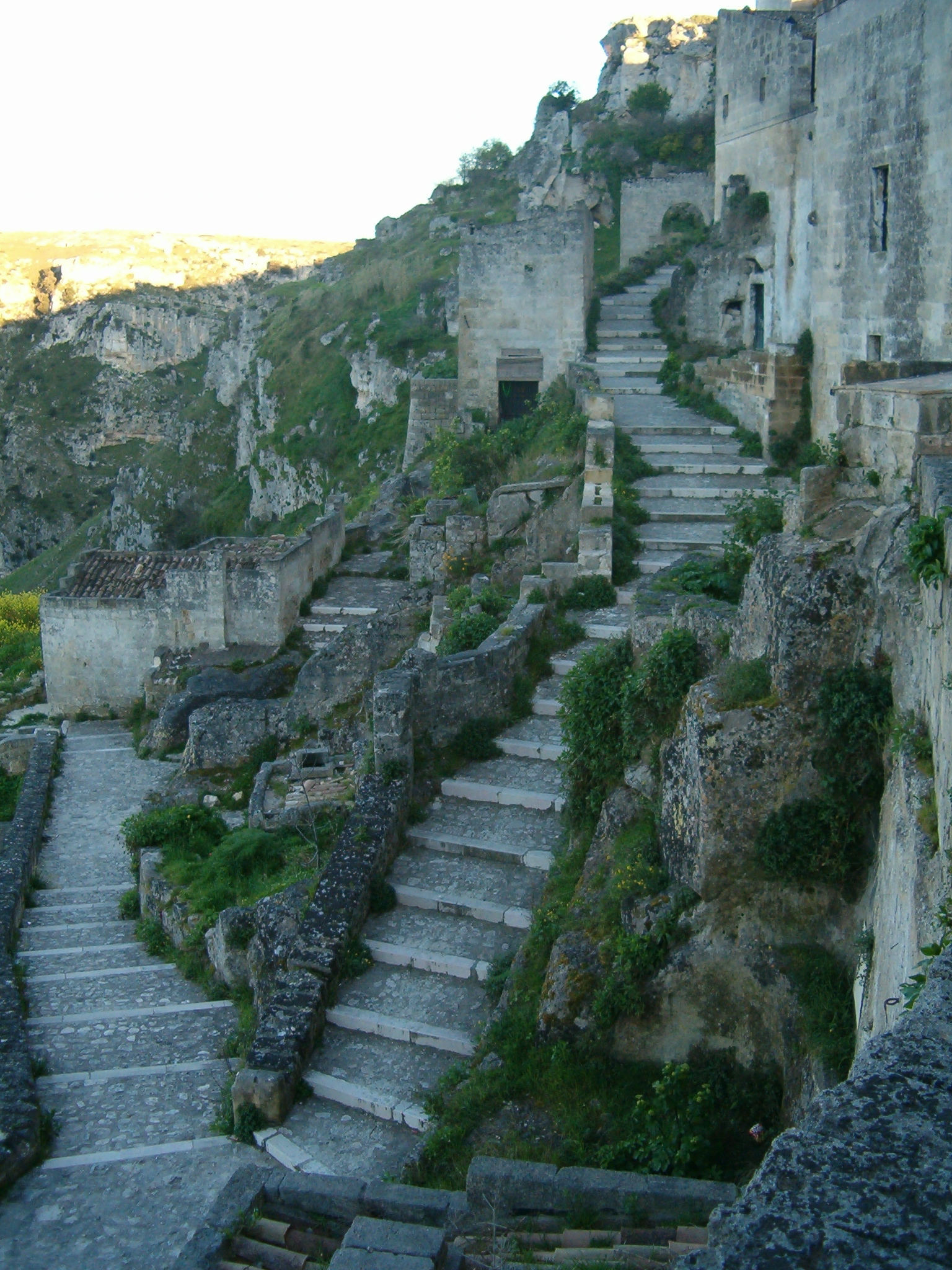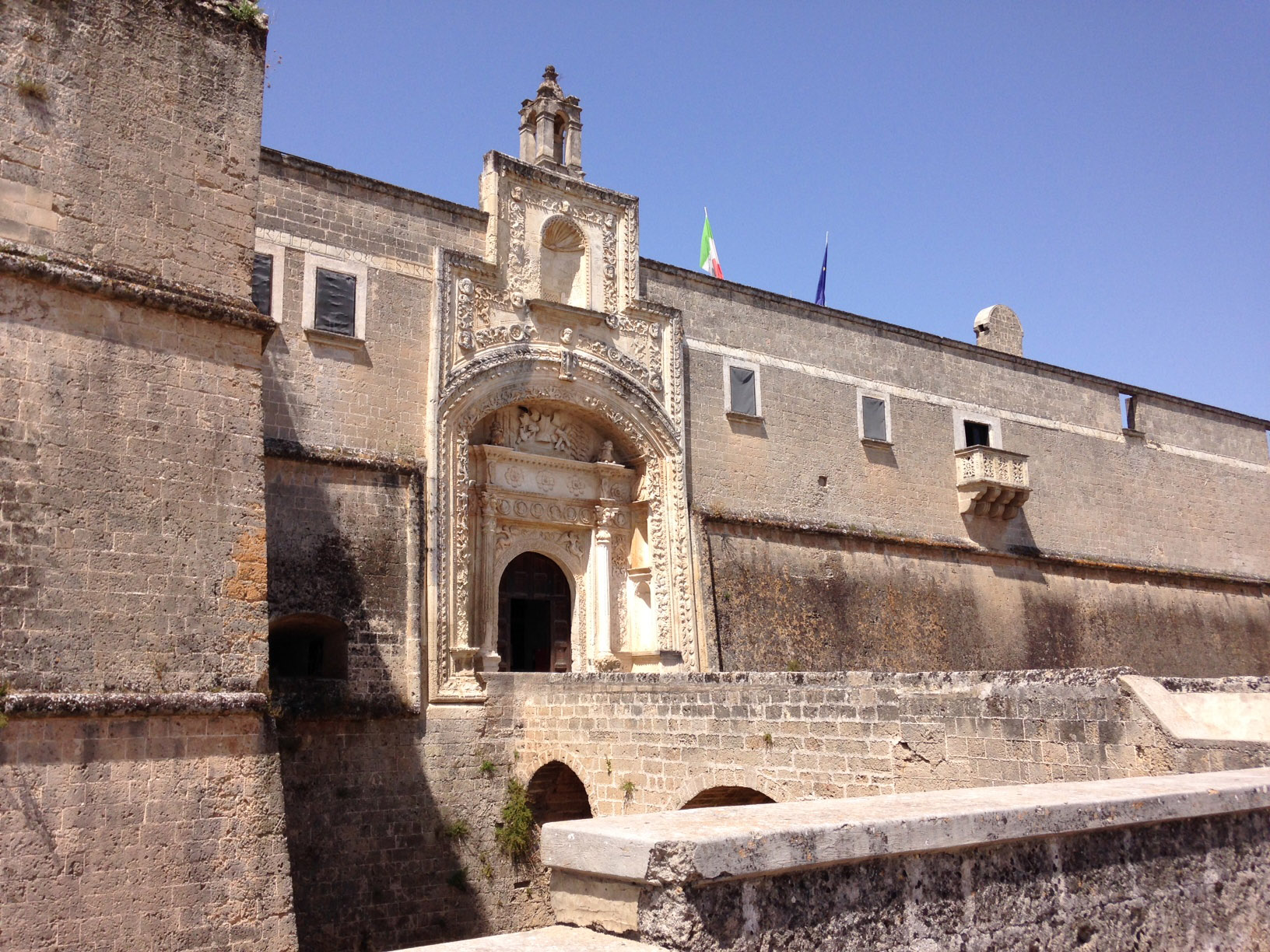|
1743 Salento Earthquake
The 1743 Salento earthquake affected the Apulian region of southwestern Italy on 20 February at 23:30 IST. The ~7.1 earthquake had an epicenter in the Adriatic and Ionian seas, off the coast of modern-day Lecce and Brindisi provinces in Salento. It had a maximum Modified Mercalli intensity of IX (''Violent''), causing heavy damage in Nardò. Damage was also reported across the sea, in the Balkans. The earthquake also generated a tsunami of up to 11 meters in run-up. Between 180 and 300 people were killed in the disaster. Tectonic setting The tectonics of southern Italy is highly influenced by the subduction of the Ionian Sea oceanic crust along the Calabrian Arc in the southwest of the peninsula. To the northeast, along the west coast of the Adriatic Sea (Balkans), is the Hellenides thrust zone. This region of the Mediterranean Sea forms part of the complex convergent boundary between the Eurasian and African plates, where it is broken up into smaller microplates moving in ... [...More Info...] [...Related Items...] OR: [Wikipedia] [Google] [Baidu] |
Time In Italy
Italy alternates between Central European Time ( it, Tempo dell'Europa Centrale, UTC+01:00) and Central European Summer Time ( it, Orario Estivo dell'Europa Centrale, UTC+02:00), because it follows the European Summer Time annual Daylight saving time Daylight saving time (DST), also referred to as daylight savings time or simply daylight time (United States, Canada, and Australia), and summer time (United Kingdom, European Union, and others), is the practice of advancing clocks (typicall ... ( it, ora legale) procedure. As such Italy begins observing Central European Summer Time at 02:00 CET on the last Sunday in March and switches back to Central European Time on the last Sunday of October since 1996. {{Italy-stub ... [...More Info...] [...Related Items...] OR: [Wikipedia] [Google] [Baidu] |
Altopiano Delle Murge
The Altopiano delle Murge (Italian for "Murge plateau") is a karst topographic plateau of rectangular shape in southern Italy. Most of it lies within Apulia and corresponds with the sub-region known as Murgia or Le Murge. The plateau lies mainly in the Metropolitan City of Bari and the province of Barletta-Andria-Trani, but extends into the provinces of Brindisi and Taranto to the south, and into Matera in Basilicata to the west. The name is believed to originate from the Latin ''murex'', meaning "sharp stone". Geography and geology The Murge plateau covers a surface of some 4,000 km², bordered by the Ofanto river and the Tavoliere delle Puglie to the north, the Adriatic Sea to the northeast, and by the Messapic depression, which separates it from the Salento peninsula, to the south. It is usually divided into Alta Murgia (High Murgia), the highest area, with poorer vegetation, and Bassa Murgia (Lower Murgia), with more fertile land, extensively planted with olive-trees f ... [...More Info...] [...Related Items...] OR: [Wikipedia] [Google] [Baidu] |
Lefkada
Lefkada ( el, Λευκάδα, ''Lefkáda'', ), also known as Lefkas or Leukas (Ancient Greek and Katharevousa: Λευκάς, ''Leukás'', modern pronunciation ''Lefkás'') and Leucadia, is a Greek island in the Ionian Sea on the west coast of Greece, connected to the mainland by a long causeway and floating bridge. The principal town of the island and seat of the municipality is Lefkada. It is situated on the northern part of the island, approximately 25 minutes by automobile away from Aktion National Airport. The island is part of the regional unit of Lefkada. Geography Lefkada measures from north to south, and from east to west. The area of the island is about , the area of the municipality (including the islands Kalamos, Kastos and several smaller islets) is . Its highest point is the mountain Stavrota, above sea level, situated in the middle of the island. The east coast section of the island has small resorts of Lygia, Nikiana and Perigiali, all north of Nidri, the ... [...More Info...] [...Related Items...] OR: [Wikipedia] [Google] [Baidu] |
Trento
Trento ( or ; Ladin and lmo, Trent; german: Trient ; cim, Tria; , ), also anglicized as Trent, is a city on the Adige River in Trentino-Alto Adige/Südtirol in Italy. It is the capital of the autonomous province of Trento. In the 16th century, the city was the location of the Council of Trent. Formerly part of Austria and Austria-Hungary, it was annexed by Italy in 1919. With 118,142 inhabitants, Trento is the third largest city in the Alps and second largest in the historical region of Tyrol. Trento is an educational, scientific, financial and political centre in Trentino-Alto Adige/Südtirol, in Tyrol and Northern Italy in general. The city contains a picturesque Medieval and Renaissance historic centre, with ancient buildings such as Trento Cathedral and the Castello del Buonconsiglio. Together with other Alpine towns Trento engages in the Alpine Town of the Year Association for the implementation of the Alpine Convention to achieve sustainable development in the Alpin ... [...More Info...] [...Related Items...] OR: [Wikipedia] [Google] [Baidu] |
Udine
Udine ( , ; fur, Udin; la, Utinum) is a city and ''comune'' in north-eastern Italy, in the middle of the Friuli Venezia Giulia region, between the Adriatic Sea and the Alps (''Alpi Carniche''). Its population was 100,514 in 2012, 176,000 with the urban area. Names and etymology Udine was first attested in medieval Latin records as ''Udene'' in 983 and as ''Utinum'' around the year 1000. The origin of the name ''Udine'' is unclear. It has been tentatively suggested that the name may be of pre-Roman origin, connected with the Indo-European root *''odh-'' 'udder' used in a figurative sense to mean 'hill'. The Slovene name ''Videm'' (with final -''m'') is a hypercorrection of the local Slovene name ''Vidan'' (with final -''n''), based on settlements named ''Videm'' in Slovenia. The Slovene linguist Pavle Merkù characterized the Slovene form ''Videm'' as an "idiotic 19th-century hypercorrection." History Udine is the historical capital of Friuli. The area has been inhabited si ... [...More Info...] [...Related Items...] OR: [Wikipedia] [Google] [Baidu] |
Messina
Messina (, also , ) is a harbour city and the capital of the Italian Metropolitan City of Messina. It is the third largest city on the island of Sicily, and the 13th largest city in Italy, with a population of more than 219,000 inhabitants in the city proper and about 650,000 in the Metropolitan City. It is located near the northeast corner of Sicily, at the Strait of Messina and it is an important access terminal to Calabria region, Villa San Giovanni, Reggio Calabria on the mainland. According to Eurostat the FUA of the metropolitan area of Messina has, in 2014, 277,584 inhabitants. The city's main resources are its seaports (commercial and military shipyards), cruise tourism, commerce, and agriculture (wine production and cultivating lemons, oranges, mandarin oranges, and olives). The city has been a Roman Catholic Archdiocese and Archimandrite seat since 1548 and is home to a locally important international fair. The city has the University of Messina, founded in 1548 ... [...More Info...] [...Related Items...] OR: [Wikipedia] [Google] [Baidu] |
Reggio Calabria
Reggio di Calabria ( scn, label= Southern Calabrian, Riggiu; el, label= Calabrian Greek, Ρήγι, Rìji), usually referred to as Reggio Calabria, or simply Reggio by its inhabitants, is the largest city in Calabria. It has an estimated population of nearly 200,000 and is the twenty-first most populous city in Italy, after Modena, and the 100th most populated city in Europe. Reggio Calabria is located in the exact center of the Mediterranean and is known for its climate, ethnic and cultural diversity. It is the third economic centre of mainland Southern Italy. About 560,000 people live in the metropolitan area, recognised in 2015 by Italy as a metropolitan city. Reggio is located on the "toe" of the Italian Peninsula and is separated from the island of Sicily by the Strait of Messina. It is situated on the slopes of the Aspromonte, a long, craggy mountain range that runs up through the centre of the region. As a major functional pole in the region, it has strong historical ... [...More Info...] [...Related Items...] OR: [Wikipedia] [Google] [Baidu] |
Matera
Matera (, ; Materano: ) is a city in the region of Basilicata, in Southern Italy. As the capital of the province of Matera, its original settlement lies in two canyons carved by the Gravina River. This area, the Sassi di Matera, is a complex of cave dwellings carved into the ancient river canyon. Over the course of its history, Matera has been occupied by Romans, Longobards, Byzantines, Saracens, Swabians, Angevins, Aragonese, and Bourbons. By the late 1800s, Matera's cave dwellings became noted for intractable poverty, poor sanitation, meager working conditions, and rampant disease. Evacuated in 1952, the population was relocated to modern housing, and the Sassi (Italian for "stones") lay abandoned until the 1980s. Renewed vision and investment led to the cave dwellings becoming a noted historic tourism destination, with hotels, small museums and restaurants – and a vibrant arts community. Known as ("the underground city"), the Sassi and the park of the Rupestrian Chur ... [...More Info...] [...Related Items...] OR: [Wikipedia] [Google] [Baidu] |
Naples
Naples (; it, Napoli ; nap, Napule ), from grc, Νεάπολις, Neápolis, lit=new city. is the regional capital of Campania and the third-largest city of Italy, after Rome and Milan, with a population of 909,048 within the city's administrative limits as of 2022. Its province-level municipality is the third-most populous metropolitan city in Italy with a population of 3,115,320 residents, and its metropolitan area stretches beyond the boundaries of the city wall for approximately 20 miles. Founded by Greeks in the first millennium BC, Naples is one of the oldest continuously inhabited urban areas in the world. In the eighth century BC, a colony known as Parthenope ( grc, Παρθενόπη) was established on the Pizzofalcone hill. In the sixth century BC, it was refounded as Neápolis. The city was an important part of Magna Graecia, played a major role in the merging of Greek and Roman society, and was a significant cultural centre under the Romans. Naples served a ... [...More Info...] [...Related Items...] OR: [Wikipedia] [Google] [Baidu] |
Copertino
Copertino (; historical en, Cupertino, italic=yes; scn, label=Salentino, Cupirtinu ), also known in English as Cupertino, is a town and ''comune'' in the province of Lecce in the Apulia region of south-east Italy. History Following Charles of Anjou's successful campaign in 1266, the Hohenstaufen tower of Copertino was held first by the de Pratis family and then by Walter VI of Brienne, Duke of Athens, Count of Lecce and Grand Constable of France. Copertino became the centre of a County under the Enghiens, who were sovereigns of the land of Galatone, Leverano and Veglie. With the marriage of Mary of Enghien, Countess of Lecce and Copertino (later Queen of Naples and titular Queen of Sicily, Jerusalem, and Hungary) to Raimondo del Balzo Orsini, the county became part of the principality of Taranto. The French knight Tristan Chiaromonte (de Clermont-Lodeve) led the development of the county capital, having assumed power over the territory on his marriage to Caterina, daughter of ... [...More Info...] [...Related Items...] OR: [Wikipedia] [Google] [Baidu] |
Galatone
Galatone (Griko: translit. ) is a town and ''comune'' located in Salento, in the province of Lecce (Apulia, southern Italy), the former seat of the Marquess of Galatone. It is one of the most populous towns of the province where the Greek dialect Griko is spoken and its territory includes a stretch of coast overlooking the Ionian Sea with the localities of La Reggia and Montagna Spaccata. History In the Middle Ages, Galatone was a Eastern Orthodox Church, Greek center: the Greek language was spoken and Byzantine Empire, Byzantine rites were celebrated in churches up to the end of the 14th century. Greek people, Greek scholar Antonio de Ferraris (''"il Galateo"'') was born here during the Renaissance, and was author of an important historical and geographical study of the Salentine peninsula. Main sights The main attraction of the town is the ''Santuario del Crocifisso della Pietà'', a Baroque church built between 1696 and 1710. This has a three-level façade which is richly de ... [...More Info...] [...Related Items...] OR: [Wikipedia] [Google] [Baidu] |
Francavilla Fontana
Francavilla Fontana ( Francavillese: ) is a town and ''comune'' (municipality) in the province of Brindisi and region of Apulia, in southern Italy. It is also called the town of the "Imperiali", after the Imperiali, a family of feudal lords who ruled the town from the end of 16th century until the 18th century. With a population of 36,358, in 2017, it is the third municipality of its province after Brindisi and Fasano. Its one of the many towns in south Italy where the Greek dialect Griko is spoken. History The name Francavilla has French-Norman origins: "Franca" (tax-free) and "villa" (town). The specification '' Fontana'' ("fountain") alludes to a vision of the Virgin Mary witnessed by Prince Filippo d'Angiò, who hence declaring the town a tax-free haven, according to the local legend. Geography Francavilla is located in the Altosalento, on the last Murge's hills, and it is equidistant, about , from Taranto and Brindisi. The municipality borders with Ceglie Messapica, Grottag ... [...More Info...] [...Related Items...] OR: [Wikipedia] [Google] [Baidu] |







